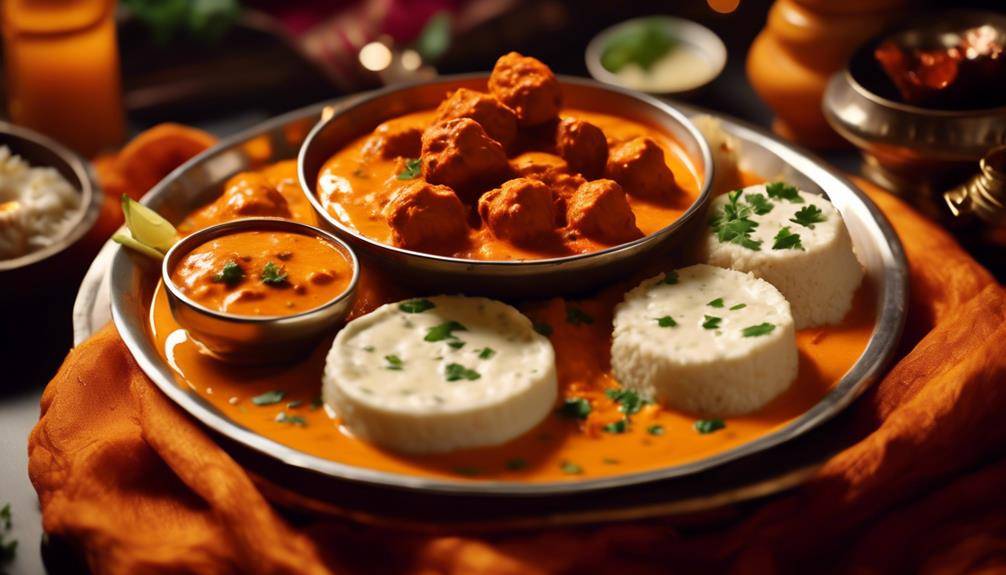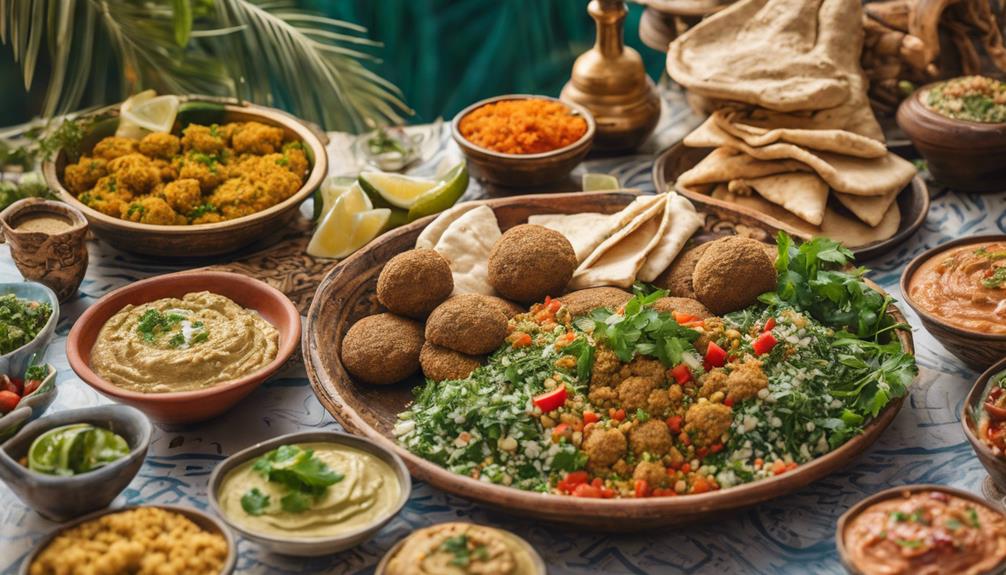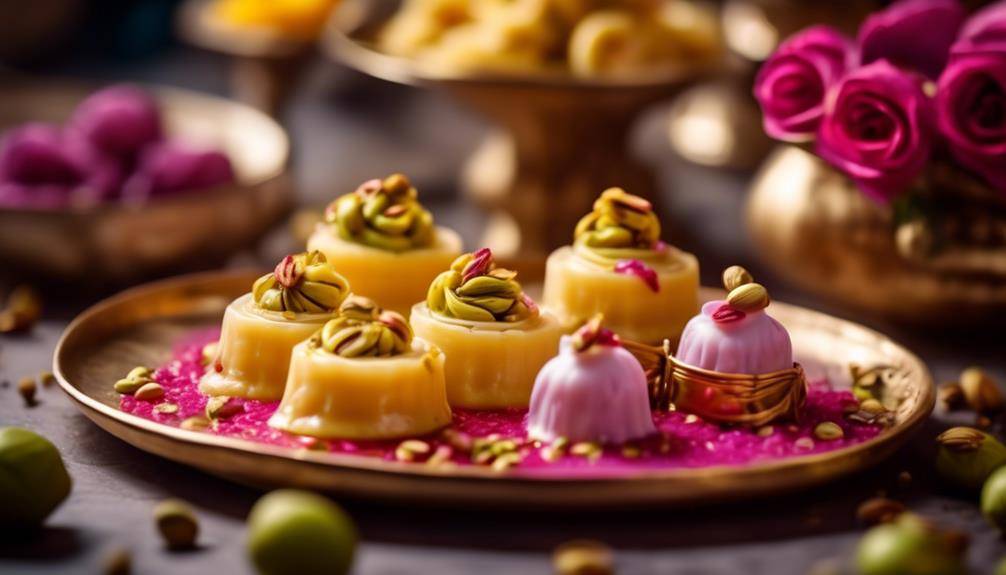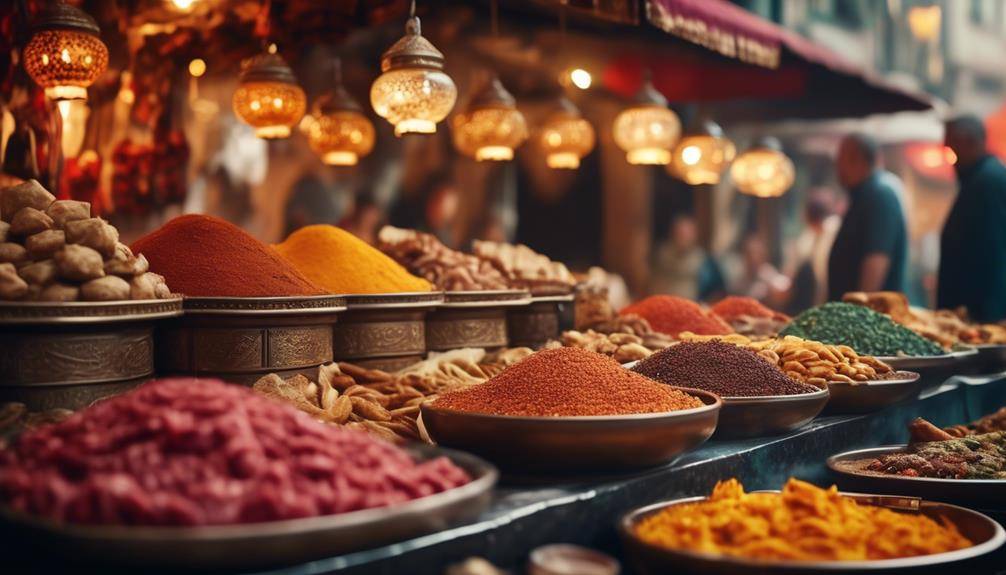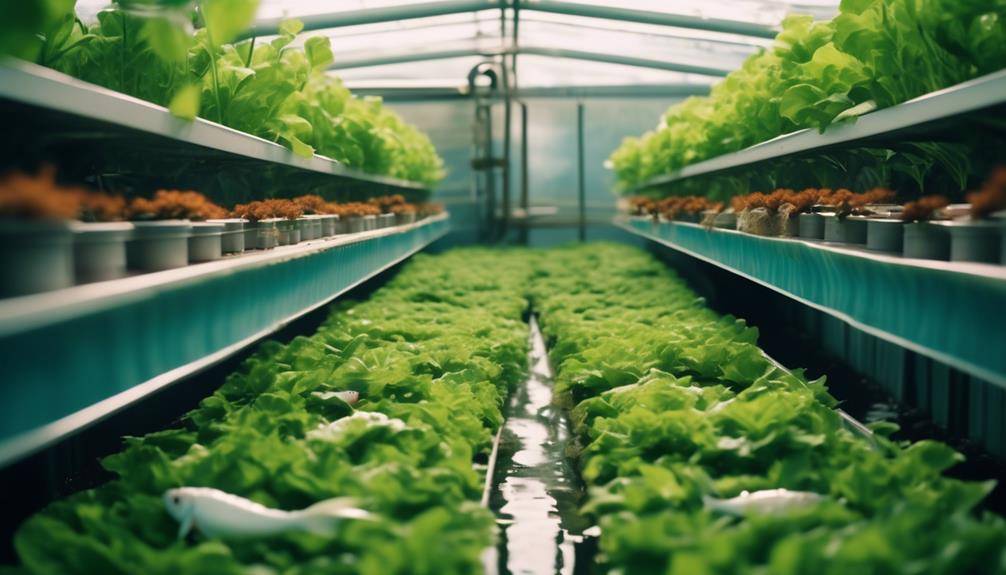What Is Peruvian Cuisine And Its Health Benefits
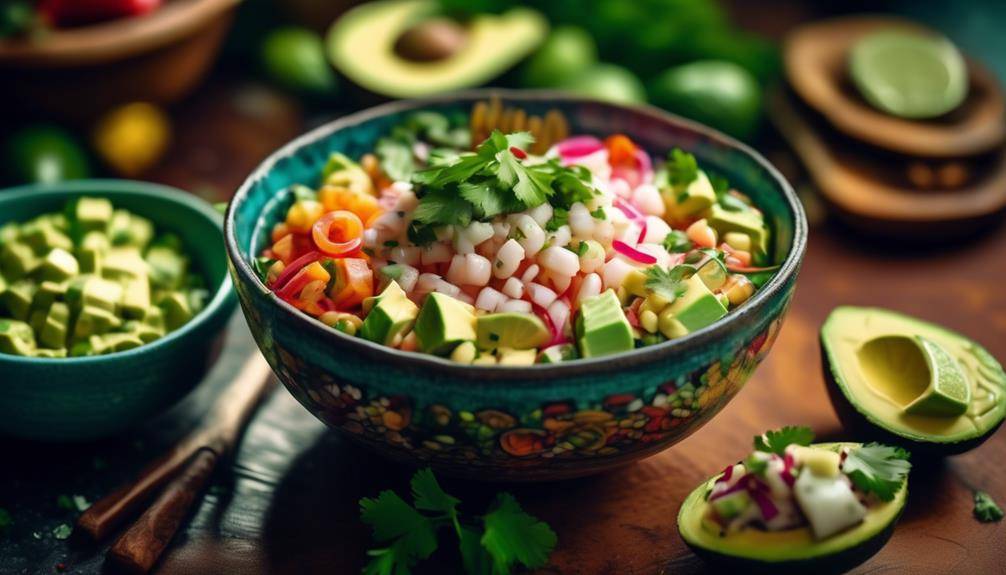
They say that “you are what you eat,” and when it comes to Peruvian Cuisine And Its Health Benefits, this adage couldn’t be more true. Peruvian cuisine is not only delicious, but it also offers a multitude of health benefits that will leave you feeling nourished and satisfied.
From the use of fresh and natural ingredients to the incorporation of superfoods and healing herbs, Peruvian dishes are a treasure trove of nutrients that can improve your overall well-being. But the benefits don’t stop there. So, if you’re curious to discover how Peruvian cuisine can enhance your health and bring a burst of flavor to your meals, get ready to embark on a culinary journey that will leave you craving for more.
Fresh and Natural Ingredients
In Peruvian cuisine, fresh and natural ingredients are the cornerstone of every dish, ensuring a vibrant and wholesome culinary experience. The emphasis on using locally sourced produce not only guarantees the highest quality but also promotes sustainable farming practices. This commitment to fresh ingredients extends to the wide array of vegetarian options available in Peruvian cuisine.
Peru’s diverse climate and fertile soil allow for a rich variety of fruits, vegetables, and grains to thrive. From the Andes Mountains to the coastal regions, Peruvians have access to an abundance of fresh produce throughout the year. This accessibility translates into a vibrant vegetarian culinary scene, with numerous options that cater to those who prefer plant-based diets.
Vegetarian dishes in Peru are not just an afterthought; they are carefully crafted and celebrated. Quinoa, a nutrient-dense grain native to the Andes, is a staple in many vegetarian dishes. Its versatility allows it to be used in salads, stir-fries, and even desserts. Other popular vegetarian ingredients include corn, potatoes, avocados, and a wide variety of beans.
In addition to the emphasis on fresh ingredients, Peruvian cuisine also promotes sustainable farming practices. Many farmers in Peru still adhere to traditional farming methods, using organic fertilizers and avoiding harmful pesticides. This commitment to sustainable agriculture not only ensures the integrity of the ingredients but also supports local farmers and preserves the environment.
Whether you follow a vegetarian diet or simply enjoy incorporating more plant-based options into your meals, Peruvian cuisine offers a wealth of delicious and nutritious choices. The use of fresh and natural ingredients, combined with sustainable farming practices, results in a culinary experience that is both satisfying and environmentally conscious.
Rich in Superfoods
Packed with an array of nutrient-rich ingredients, Peruvian cuisine offers a wide variety of superfoods that contribute to a healthy and balanced diet. The rich biodiversity of Peru provides an abundance of superfoods that have been enjoyed for centuries. From the Andean mountains to the coastal regions, Peruvian superfoods are a testament to the country’s commitment to nourishing its people with wholesome and delicious ingredients.
Here are three Peruvian superfoods that you should incorporate into your diet:
- Quinoa: This ancient grain is a staple in Peruvian cuisine and is packed with essential nutrients like protein, fiber, and minerals. It is also gluten-free and has a low glycemic index, making it an excellent choice for those with dietary restrictions or blood sugar concerns. Try incorporating quinoa into your meals by making a colorful quinoa salad or swapping it for rice in stir-fries.
- Maca: Known for its energy-boosting properties, maca is a root vegetable native to the high altitudes of the Andes. It is rich in vitamins, minerals, and antioxidants, and has been used for centuries for its potential health benefits. Add a teaspoon of maca powder to your smoothies or sprinkle it on top of your yogurt for a nutritious boost.
- Purple Corn: This vibrant corn variety is not only visually appealing but also packed with antioxidants called anthocyanins. These antioxidants have been linked to various health benefits, including reducing the risk of chronic diseases. Enjoy the unique flavor and color of purple corn by incorporating it into your favorite dishes, such as cornbread or pancakes.
Incorporating these Peruvian superfoods into your diet is a delicious and nutritious way to boost your overall health. Explore superfood recipes and embrace the culinary traditions of Peru to experience the benefits firsthand.
High in Nutrient-Dense Proteins
You’ll be delighted to discover that Peruvian cuisine is not only rich in flavor, but also high in nutrient-dense proteins. From succulent grilled meats to hearty seafood dishes, Peruvian cuisine offers a wide array of protein-packed options that are sure to satisfy your taste buds and provide you with essential amino acids. These proteins not only support muscle growth and repair, but also contribute to a healthy immune system and overall well-being.
Protein-Packed Peruvian Dishes
Peruvian cuisine offers a wide array of protein-packed dishes that are rich in nutrient-dense proteins. Whether you’re a meat lover or a vegan, there are plenty of options to satisfy your protein needs while indulging in the flavors of Peru. Here are three protein-packed Peruvian dishes that will leave you feeling nourished and satisfied:
- Quinoa Salad: Made with protein-rich quinoa, this vegan-friendly dish is a nutritious option that showcases the sustainable farming practices of Peru. Tossed with fresh vegetables, herbs, and a zesty dressing, it’s a delicious and filling meal.
- Lomo Saltado: This classic Peruvian stir-fry combines tender strips of beef or tofu with onions, tomatoes, and spices. It’s a hearty dish that provides a generous amount of protein, perfect for those looking to fuel their active lifestyle.
- Ceviche: A refreshing seafood dish, ceviche is prepared by marinating raw fish or shrimp in citrus juices. Packed with lean protein and essential nutrients, it’s a light yet satisfying option that showcases the abundance of fresh seafood in Peru.
Explore these protein-packed Peruvian dishes and experience the flavors of Peru while nourishing your body with nutrient-dense proteins.
Nutritional Benefits of Peruvian Cuisine
What makes Peruvian cuisine a nutritional powerhouse, particularly when it comes to high nutrient-dense proteins? Peruvian cuisine is known for its diverse and flavorful dishes, and it also offers numerous health benefits. One of the key nutritional benefits of Peruvian cuisine is its high content of nutrient-dense proteins. These proteins play a crucial role in various aspects of your health, including weight loss and digestive health.
Peruvian cuisine incorporates a variety of protein-rich ingredients such as quinoa, beans, seafood, and lean meats like chicken and alpaca. These proteins are not only packed with essential amino acids but also low in saturated fats, making them a healthier choice. The combination of lean proteins and other nutrient-rich ingredients in Peruvian dishes helps to promote a feeling of fullness, aiding in weight management.
In addition, the high fiber content of Peruvian cuisine, especially from ingredients like quinoa and beans, contributes to improved digestive health. Fiber helps to regulate bowel movements, prevent constipation, and support a healthy gut microbiome.
Packed With Antioxidants
Packed with a plethora of powerful antioxidants, Peruvian cuisine offers a delicious and nutritious way to support your overall health and well-being. These antioxidants help combat free radicals in your body, reducing the risk of chronic diseases and promoting a stronger immune system. Here are three antioxidant-rich Peruvian dishes that can contribute to your well-being:
- Ceviche: This popular Peruvian dish combines fresh fish or seafood with citrus juices, onions, and chili peppers. The high vitamin C content from the citrus fruits enhances the absorption of iron from the fish, while the chili peppers provide a dose of capsaicin, a compound known for its antioxidant properties. Enjoying a plate of ceviche not only satisfies your taste buds but also boosts your antioxidant intake.
- Purple Corn: Known as “maiz morado,” this unique Peruvian ingredient is packed with anthocyanins, a type of antioxidant that gives the corn its vibrant color. Anthocyanins have been linked to numerous health benefits, including reducing inflammation, supporting brain health, and protecting against heart disease. Incorporating purple corn into your diet can be as simple as enjoying a glass of chicha morada, a refreshing Peruvian beverage made from boiled purple corn, pineapple, cinnamon, and cloves.
- Quinoa: This ancient grain is a staple in Peruvian cuisine and is considered a superfood due to its high nutritional value. Quinoa is a rich source of antioxidants, including flavonoids and quercetin, which have been shown to have anti-inflammatory and anti-cancer properties. Incorporating quinoa into your meals, whether as a base for salads or a side dish, is a delicious way to boost your antioxidant intake and support your overall health.
Heart-Healthy Fats
Indulging in the flavors of Peruvian cuisine can provide you with a delectable way to incorporate heart-healthy fats into your diet. Peruvian cuisine is known for its use of ingredients that are not only delicious but also beneficial for your heart health. By using heart-healthy cooking techniques and incorporating Peruvian superfood recipes into your meals, you can enjoy the rich flavors while promoting cardiovascular wellness.
One of the key heart-healthy cooking techniques used in Peruvian cuisine is the use of healthy fats, such as avocado and olive oil. These fats are rich in monounsaturated and polyunsaturated fats, which can help lower bad cholesterol levels and reduce the risk of heart disease. Instead of using unhealthy fats like butter or margarine, Peruvian cuisine embraces these heart-healthy alternatives, giving your dishes a creamy texture and a satisfying taste.
In addition to using healthy fats in their cooking, Peruvian cuisine also incorporates superfoods that are known for their heart-healthy properties. Quinoa, for example, is a staple in Peruvian cuisine and is packed with heart-healthy nutrients like fiber, protein, and omega-3 fatty acids. These nutrients can help reduce blood pressure and inflammation, promoting a healthy cardiovascular system.
Another superfood commonly used in Peruvian cuisine is the purple potato. These vibrant tubers are a great source of antioxidants, which can help reduce the risk of heart disease by protecting the heart from damage caused by free radicals. Purple potatoes also contain resistant starch, which can help regulate blood sugar levels and promote a healthy weight.
Gluten-Free Options
Looking for gluten-free options in Peruvian cuisine? You’re in luck! Peruvian dishes offer a variety of celiac-friendly options that are both delicious and nutritious. From quinoa and amaranth to corn and potatoes, ancient grain alternatives are widely used, providing a satisfying alternative to gluten-containing ingredients. With these gluten-free options, you can enjoy the flavors of Peruvian cuisine without worrying about gluten.
Celiac-Friendly Dishes
If you have celiac disease or are following a gluten-free diet, Peruvian cuisine offers a variety of delectable options that cater to your dietary needs. Peruvian chefs have mastered the art of creating celiac-friendly alternatives using innovative gluten-free cooking techniques. Here are three mouthwatering dishes that will leave you craving for more:
- Ceviche: This iconic Peruvian dish traditionally consists of fresh fish marinated in lime juice and mixed with onions, peppers, and cilantro. The acidity of the lime juice effectively cooks the fish, eliminating the need for any gluten-containing ingredients.
- Quinoa Salad: Quinoa, a nutrient-rich grain, is a staple in Peruvian cuisine. Mixed with colorful vegetables, herbs, and a tangy dressing, this gluten-free salad is both satisfying and nourishing.
- Lomo Saltado: This flavorful stir-fry combines tender beef, onions, tomatoes, and spices. Traditionally served with rice, you can opt for gluten-free alternatives like quinoa or corn to accompany this scrumptious dish.
Peruvian cuisine not only offers a wide range of flavors but also caters to those with dietary restrictions, ensuring a delightful dining experience for everyone.
Ancient Grain Alternatives
For those seeking gluten-free options, Peruvian cuisine offers a diverse array of ancient grain alternatives that provide both flavor and nutritional value. Ancient grains have been a staple in Peruvian cooking for centuries and are now gaining popularity worldwide due to their health benefits. Quinoa, amaranth, and kiwicha are just a few examples of ancient grains that are commonly used in Peruvian recipes. These grains are not only gluten-free but also rich in essential nutrients like protein, fiber, and antioxidants.
They have been linked to various health benefits, including improved digestion, reduced risk of chronic diseases, and better blood sugar control. Peruvian cuisine showcases the versatility of these ancient grains through dishes like quinoa salads, amaranth porridge, and kiwicha desserts. Incorporating these ancient grain recipes into your diet can be a delicious and nutritious way to enjoy gluten-free options.
Nutritious Gluten-Free Ingredients
Continuing our exploration of Peruvian cuisine, let’s now turn our attention to the wide range of nutritious gluten-free ingredients that are available, offering delicious options for those with dietary restrictions. Peruvian cuisine is known for its diverse and flavorful dishes, and it does not disappoint when it comes to providing healthy dessert options and plant-based alternatives. Here are three gluten-free ingredients that will satisfy your taste buds and leave you feeling nourished:
- Quinoa: This versatile superfood is a staple in Peruvian cuisine. Packed with protein, fiber, and essential nutrients, quinoa can be used in both sweet and savory dishes. Try it in a refreshing quinoa salad or as a base for a delicious quinoa pudding.
- Sweet potatoes: Peruvian sweet potatoes come in a variety of vibrant colors and offer a natural sweetness. They are rich in vitamins, minerals, and antioxidants, making them a great choice for guilt-free desserts. Indulge in a sweet potato pie or enjoy some baked sweet potato fries.
- Lucuma: Known as the “Gold of the Incas,” lucuma is a tropical fruit native to Peru. It has a unique flavor that is often described as a mix of maple and sweet potato. Lucuma is commonly used to make ice creams, smoothies, and desserts, providing a healthy and delicious treat.
With these nutritious gluten-free ingredients, Peruvian cuisine offers a wide array of options for those with dietary restrictions, ensuring that everyone can enjoy the flavors and benefits of this vibrant cuisine.
Low in Added Sugar
Peruvian cuisine offers a wide variety of delicious dishes that are low in added sugar, making it a healthy choice for those looking to reduce their sugar intake. With a focus on natural and wholesome ingredients, Peruvian cuisine provides numerous sugar alternatives and low sugar desserts that can satisfy your sweet tooth without compromising your health.
One popular sugar alternative in Peruvian cuisine is lucuma. Known as the “Gold of the Incas,” lucuma is a fruit native to Peru that has a naturally sweet taste. It is often used as a natural sweetener in desserts such as ice creams, cakes, and puddings. Lucuma not only adds a delightful sweetness to these dishes but also provides essential nutrients like fiber, vitamins, and minerals.
Another common sugar alternative in Peruvian cuisine is yacon syrup. Yacon is a root vegetable that is naturally low in sugar and high in fructooligosaccharides (FOS), a type of prebiotic fiber. Yacon syrup is often used as a natural sweetener in beverages, sauces, and dressings. It has a unique flavor profile, similar to molasses or caramel, which adds a delicious touch to various dishes.
In addition to sugar alternatives, Peruvian cuisine offers a wide range of low sugar desserts. One popular dessert is Mazamorra Morada, a purple corn pudding sweetened with fruit and spiced with cinnamon and cloves. This traditional dessert is not only low in added sugar but also rich in antioxidants and fiber.
Another delightful option is Suspiro a la Limeña, a creamy caramel dessert made with condensed milk and topped with meringue. While it does contain some sugar from the condensed milk, the overall sugar content is relatively low compared to other desserts. The combination of creamy caramel and fluffy meringue makes it a perfect treat to satisfy your sweet cravings.
Peruvian cuisine’s focus on natural ingredients and sugar alternatives makes it a great choice for those seeking to reduce their sugar intake. Whether you indulge in lucuma-flavored desserts or savor the richness of low sugar treats, Peruvian cuisine offers a wide array of options to satisfy your taste buds without compromising your health.
Traditional Healing Herbs and Spices
The rich tapestry of Peruvian cuisine is woven with an array of traditional healing herbs and spices, adding depth and flavor to dishes while also offering potential health benefits. These traditional remedies have been used for centuries in Peruvian culture, harnessing the healing properties of nature to promote well-being. Here are three of the most notable herbs and spices that are commonly found in Peruvian cuisine and their potential health benefits:
- Huacatay: Also known as Peruvian black mint, huacatay is a flavorful herb that is widely used in Peruvian cooking. It is believed to have anti-inflammatory properties and is used in traditional medicine to treat respiratory conditions such as asthma and bronchitis. Its distinct aroma and taste add a unique dimension to dishes like stews and sauces.
- Aji Amarillo: Aji amarillo is a vibrant yellow chili pepper that is a staple in Peruvian cuisine. It not only adds a spicy kick to dishes but also contains capsaicin, a compound known for its pain-relieving properties. Additionally, aji amarillo is rich in vitamin C, which is essential for a healthy immune system.
- Maca: Maca is a root vegetable native to the Andes mountains and is often consumed in powdered form. It has long been used in traditional Peruvian medicine as an adaptogen, helping the body cope with stress and promoting overall well-being. Maca is also believed to boost energy levels, improve fertility, and enhance libido.
Incorporating these healing herbs and spices into your diet not only adds a burst of flavor to your meals but also offers potential health benefits. Whether you are seeking relief from respiratory conditions, looking to add some spice to your life, or simply wanting to enhance your overall well-being, Peruvian cuisine provides a wealth of traditional remedies to explore.
Peruvian Cuisine And Its Health Benefits; Frequently Asked Questions
Are There Any Specific Peruvian Ingredients That Are Known for Their Healing Properties?
There are specific Peruvian ingredients known for their healing properties. Peruvian superfoods, such as maca, quinoa, and camu camu, are rich in nutrients and antioxidants that can promote good health and overall well-being.
Can You Provide Some Examples of Peruvian Dishes That Are Both Gluten-Free and Delicious?
There are plenty of examples of Peruvian dishes that are both gluten-free and delicious. Peruvian cuisine is known for its versatility, offering options like ceviche, quinoa salad, and lomo saltado.
How Does Peruvian Cuisine Incorporate Heart-Healthy Fats?
Peruvian cuisine incorporates heart-healthy fats by using ingredients like avocados, olive oil, and fatty fish. These fats are known for their healing properties and can help reduce the risk of heart disease.
What Are Some Traditional Peruvian Herbs and Spices That Are Commonly Used for Their Health Benefits?
When it comes to traditional Peruvian cuisine, there are a variety of herbs and spices that are commonly used for their health benefits. These popular ingredients for healing include traditional Peruvian herbs and spices.
Are There Any Peruvian Desserts That Are Low in Added Sugar but Still Taste Indulgent?
You’ll be pleased to know that Peruvian cuisine offers a variety of low sugar dessert options that still deliver an indulgent taste. These desserts are made using traditional Peruvian ingredients and often incorporate healing properties.
Conclusion
In conclusion, Peruvian cuisine offers a wide array of health benefits. With its emphasis on fresh and natural ingredients, it provides a rich source of superfoods, nutrient-dense proteins, and antioxidants. The inclusion of heart-healthy fats and gluten-free options makes it a great choice for those with dietary restrictions. Additionally, the use of traditional healing herbs and spices adds both flavor and potential health benefits. Overall, incorporating Peruvian cuisine into your diet can contribute to a healthier lifestyle.



